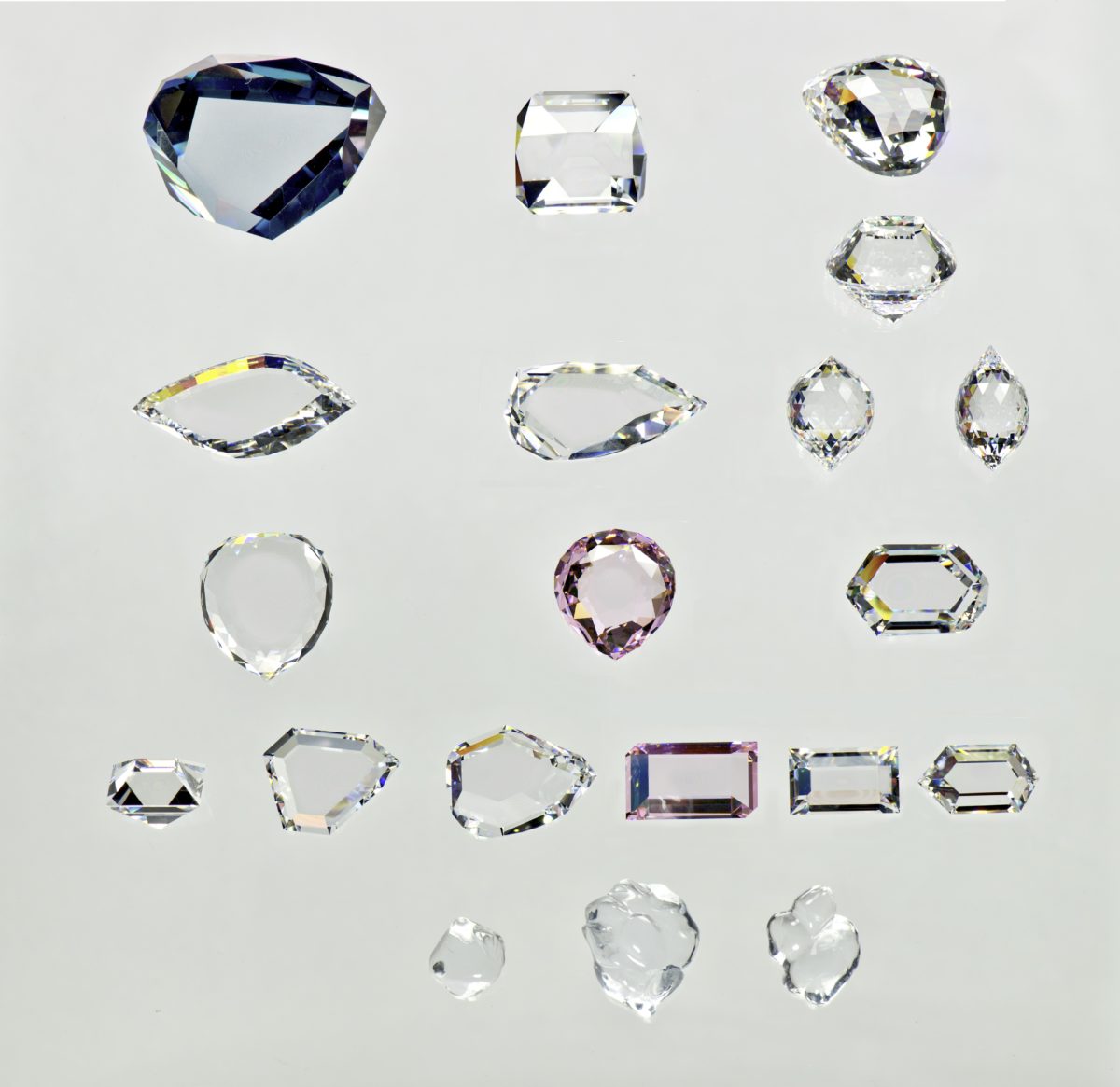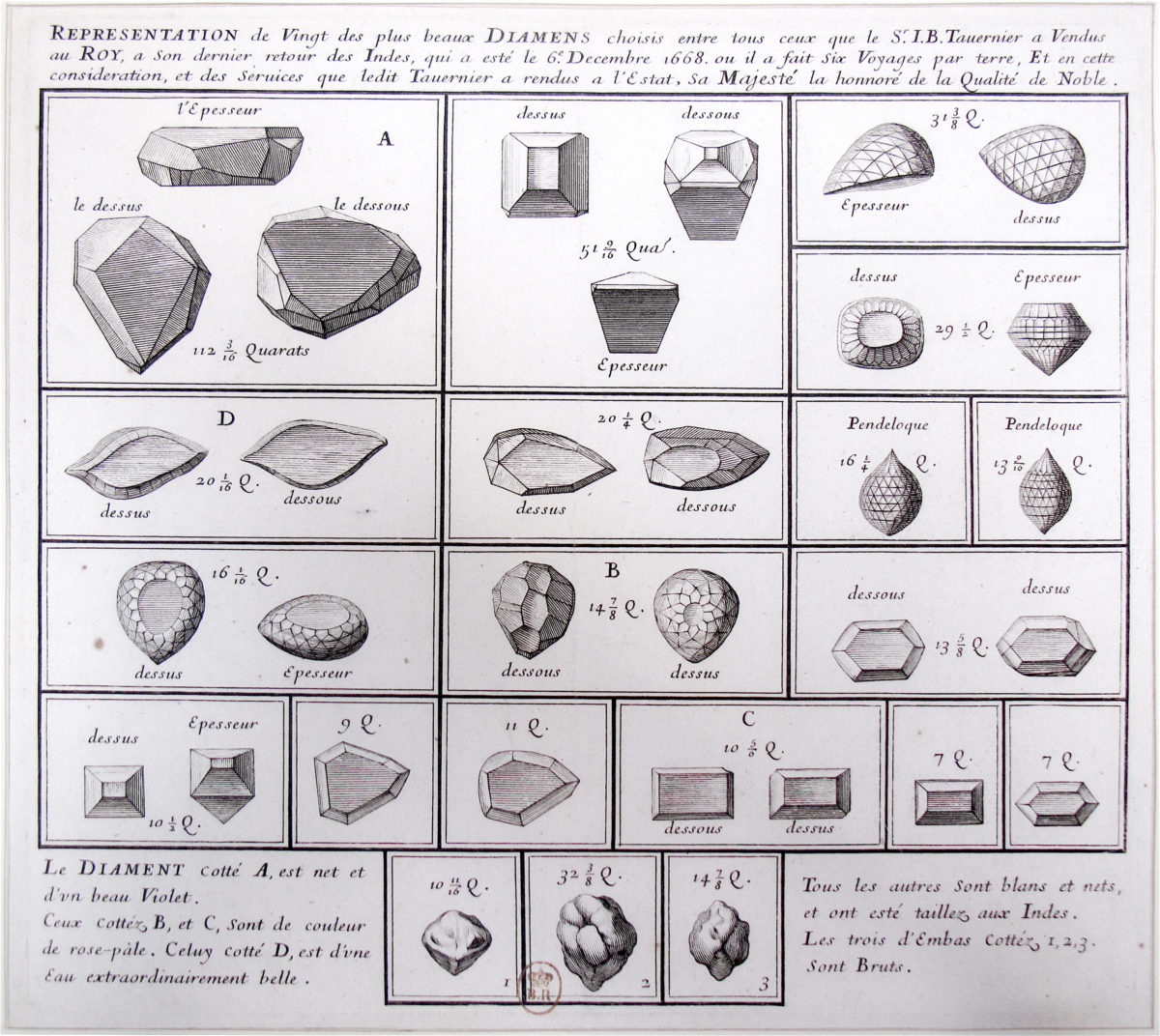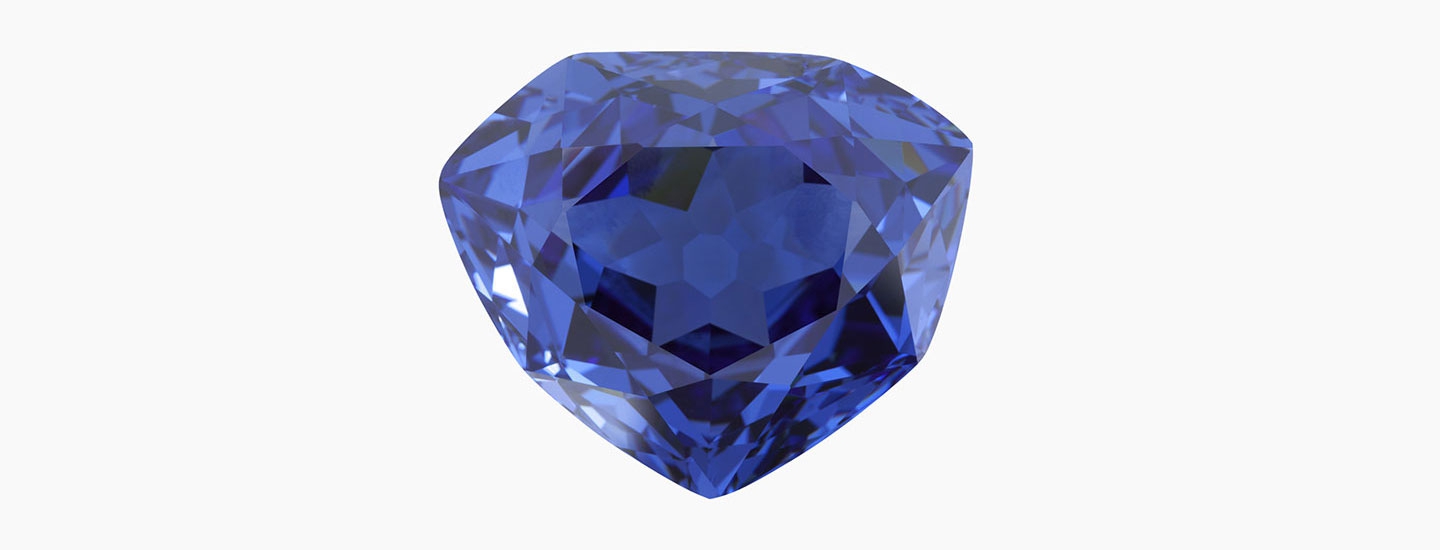By presenting for the first time the replica of the twenty most beautiful diamonds of Louis XIV, 19 of which are now presumed “lost”, the Ecole des Arts Joailliers – in partnership with Professor François Farges of the Museum of Natural History in Paris and the Canadian master lapidary Patrick Dubuc – lifts the veil on a beautiful (and brilliant!) piece of our French history.

The replicas made by Patrick Dubuc. Photo: L’Ecole des Arts Joailliers
There were twenty of them. They were brought back from the Golconde Mines by Jean-Baptiste Tavernier – a tireless explorer and merchant – who made numerous trips to Asia and India. It was during his sixth voyage (1663-1668) that he acquired these famous stones, which he sent to the King of France, who acquired almost a thousand diamonds from Tavernier. Among these lots, there are gems more exceptional than others that our merchant had immortalized in a print. The author, Abraham Bosse, describes these diamonds as “the most beautiful”. This one dates precisely from 1670 and will appear in Tavernier’s memoirs. With the exception of an anonymous note dating from 1674, this document had “disappeared”. It reappeared a few years ago, located at the BNF and the Department of Prints by Mr François Farges. It is necessary to underline the perseverance and the remarkable research of Mr. Farges, on this reconstitution, and of Mrs. Cécile Lugand, professor at the École des Arts Joailliers and doctoral student at the University of Rennes II under the direction of Professor Glorieux, who – within the framework of the realization of her thesis on the history of Mr. Tavernier – succeeded in finding the trace of rare and particularly important documents.

Print by Abraham Bosse. Photo: BNF
Of these stones, we know that one was blue, two were pink and one was of “extraordinarily beautiful” water. This is enough to suspect a type IIA, these diamonds of perfect purity and clear water typical of historical Indian mines. Twenty stones, nineteen of which are now ‘lost’. Indeed, between thefts, recutting and unkept inventories, these gems have disappeared. Only one is still known to us, the famous blue diamond that you all know under its current name “The Hope”: acquired in 1668, cut a first time in 1671, stolen in 1792, cut and then sold several times, it is now exhibited at the Smithonian in Washington. But it was not until 2007 that a lead model was found in the archives of the MNHN in Paris. The models that followed proved that this stone was indeed the famous Bleu de France. For the others, the mystery remains!
A 13.6 carat marquise-cut stone has claimed to be the avatar of the N°5 diamond since the 1980s. A cast of this stone has invalidated this theory. This one does not fit at all in the various models of possible recuts of this gem.

Model of the Bleu de France after its recutting in 1672 and according to the lead model found at the MNHN. It is this model that allowed us to understand that the Hope was indeed the famous Tavernier blue diamond which initially weighed 115 carats. Photo: MNHN – Bernard Faye
To make the replicas, particularly modern techniques had to be used and 3D modelling proved obvious. Bosse’s print shows three rough diamonds, which were hand-carved to produce a first rendering. The study of the various simulations suggests that the engraving was done to scale, which made it possible to know the almost real size of these stones. Moreover, the weights of these gems are known thanks to a very precise inventory made in 1669 by Jean Pittan le Jeune, who was the king’s ordinary jeweller. The rest is due to the talent of the lapidary and the strength of calculation of the software. The result is remarkable.
The collection can be seen at the School of Jewellery Arts until the end of January, but it will remain there. You can then make an appointment to go and see them, which I can only encourage you to do. You should also know that a second set of replicas will be proposed for donation to the MNHN and that it will be integrated into the permanent collections of mineralogy and gemmology in the coming months.
To conclude, I was sincerely amazed by the discovery of this project. I find it enriching and remarkable in its conception and in its final realisation. A truly beautiful moment. The next step will be Cécile Lugand’s thesis defense and I sincerely look forward to being there and sharing it with you!
See you soon!
*****
The School of Jewellery Arts
31 rue Danielle Casanova, 75001 Paris
Tel: +33 1 70 70 38 40
Free admission until January 31st from 10 am to 6 pm (Monday to Friday).
After that date, by appointment.






